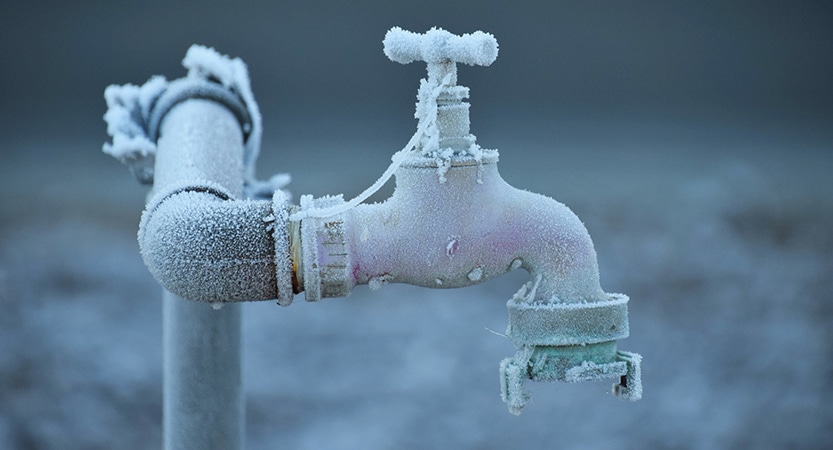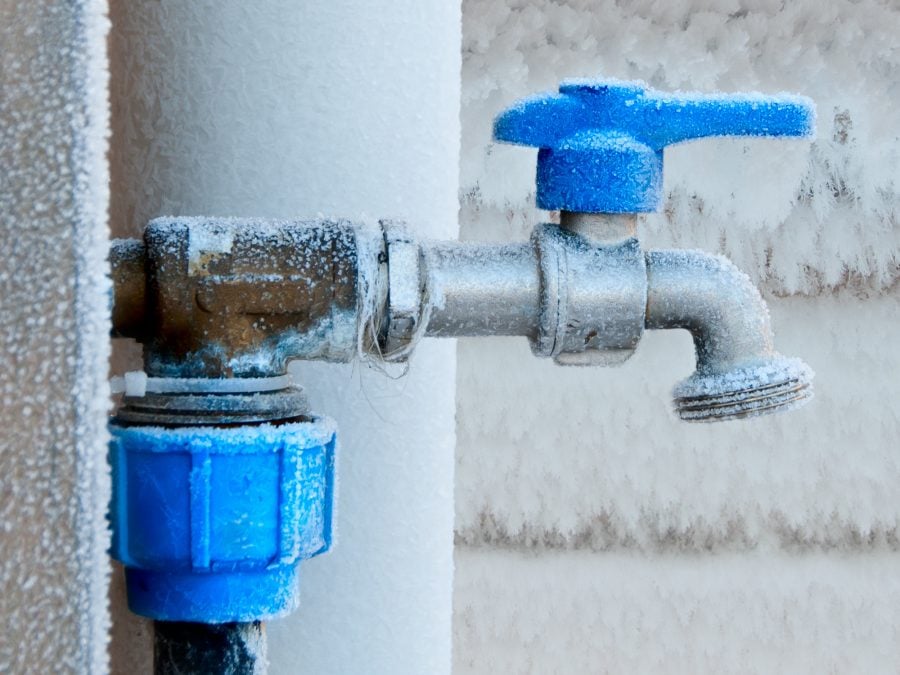Essential Approaches for Preventing Frozen Plumbing in Winter
Essential Approaches for Preventing Frozen Plumbing in Winter
Blog Article
This post down below about How to prepare your home plumbing for winter weather is incredibly captivating. You should see for yourself.

Winter can wreak havoc on your pipes, particularly by freezing pipes. Right here's how to avoid it from happening and what to do if it does.
Introduction
As temperature levels decrease, the danger of icy pipelines rises, possibly causing costly repair work and water damages. Recognizing just how to avoid frozen pipes is critical for property owners in cool climates.
Avoidance Tips
Protecting prone pipelines
Cover pipelines in insulation sleeves or utilize heat tape to protect them from freezing temperature levels. Focus on pipelines in unheated or outside areas of the home.
Home heating methods
Maintain interior spaces adequately heated up, especially areas with pipes. Open closet doors to allow cozy air to flow around pipes under sinks.
Just how to identify frozen pipelines
Look for reduced water circulation from taps, unusual odors or noises from pipelines, and noticeable frost on exposed pipes.
Long-Term Solutions
Structural changes
Take into consideration rerouting pipes away from exterior walls or unheated areas. Add added insulation to attic rooms, basements, and crawl spaces.
Upgrading insulation
Invest in premium insulation for pipes, attic rooms, and walls. Proper insulation aids maintain constant temperatures and decreases the threat of icy pipelines.
Protecting Outside Pipes
Yard hose pipes and outdoor taps
Disconnect and drain garden hose pipes before winter. Set up frost-proof spigots or cover exterior faucets with insulated caps.
Comprehending Frozen Pipelines
What causes pipelines to freeze?
Pipes freeze when subjected to temperature levels below 32 ° F (0 ° C) for extended durations. As water inside the pipes ices up, it expands, taxing the pipe walls and possibly causing them to rupture.
Threats and damages
Frozen pipelines can lead to water system disruptions, residential property damage, and expensive repair services. Ruptured pipelines can flooding homes and create extensive structural damage.
Signs of Frozen Pipeline
Determining frozen pipelines early can stop them from rupturing.
What to Do If Your Pipelines Freeze
Immediate actions to take
If you think frozen pipes, maintain taps available to eliminate pressure as the ice melts. Make use of a hairdryer or towels taken in hot water to thaw pipes gradually.
Conclusion
Stopping frozen pipelines requires positive actions and fast responses. By comprehending the reasons, signs, and preventive measures, house owners can shield their plumbing during winter.
5 Ways to Prevent Frozen Pipes
Drain Outdoor Faucets and Disconnect Hoses
First, close the shut-off valve that controls the flow of water in the pipe to your outdoor faucet. Then, head outside to disconnect and drain your hose and open the outdoor faucet to allow the water to completely drain out of the line. Turn off the faucet when done. Finally, head back to the shut-off valve and drain the remaining water inside the pipe into a bucket or container. Additionally, if you have a home irrigation system, you should consider hiring an expert to clear the system of water each year.
Insulate Pipes
One of the best and most cost-effective methods for preventing frozen water pipes is to wrap your pipes with insulation. This is especially important for areas in your home that aren’t exposed to heat, such as an attic. We suggest using foam sleeves, which can typically be found at your local hardware store.
Keep Heat Running at 65
Your pipes are located inside your walls, and the temperature there is much colder than the rest of the house. To prevent your pipes from freezing, The Insurance Information Institute suggests that you keep your home heated to at least 65 degrees, even when traveling. You may want to invest in smart devices that can keep an eye on the temperature in your home while you’re away.
Leave Water Dripping
Moving water — even a small trickle — can prevent ice from forming inside your pipes. When freezing temps are imminent, start a drip of water from all faucets that serve exposed pipes. Leaving a few faucets running will also help relieve pressure inside the pipes and help prevent a rupture if the water inside freezes.
Open Cupboard Doors
Warm your kitchen and bathroom pipes by opening cupboards and vanities. You should also leave your interior doors ajar to help warm air circulate evenly throughout your home.

I stumbled upon that entry about 6 Ways to Prevent Frozen Pipes while browsing the internet. Are you aware of somebody who is sincerely interested in the subject? Do not hesitate to promote it. We take joy in reading our article about Prevent Frozen Pipes .
Schedule Now Report this page